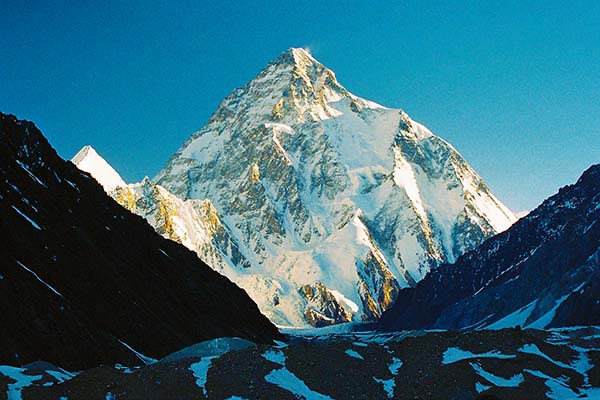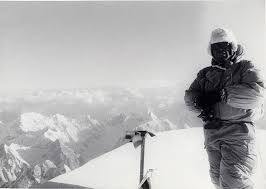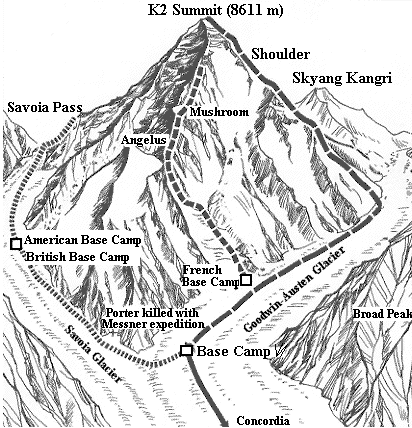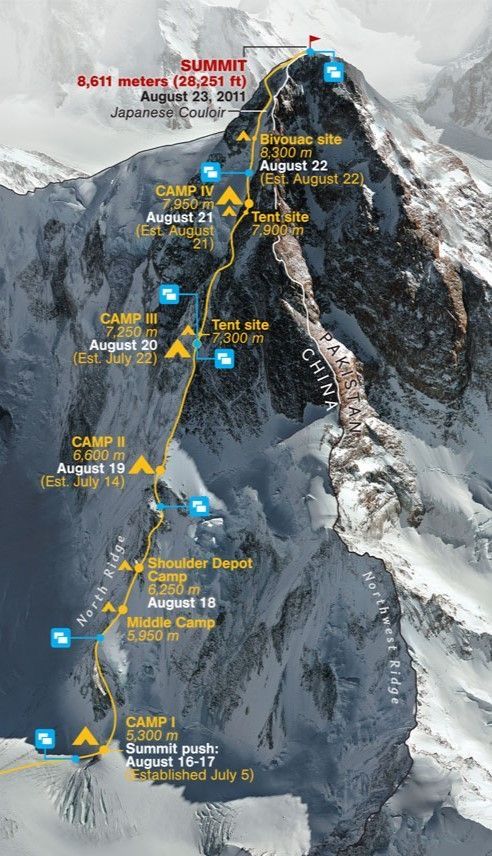“K2: The Savage Mountain and Its Surroundings.”

Introduction
K2, known as the second highest mountain in the world, is often referred to as “The Savage Mountain.”
This title was given by American climber George Bell in 1953 after he faced defeat on its treacherous slopes. K2 is notorious for its extreme difficulty and perilous conditions. Making it one of the most challenging peaks for climbers to conquer.

Standing at an elevation of 8,611 meters (28,251 feet), K2 is part of the Karakoram range, which spans the borders of Pakistan and China. Among the 14 peaks in the world that exceed 8,000 meters.
K2 is considered the most dangerous due to its harsh weather. Technical climbing routes, and high fatality rate. The mountain is characterized by steep faces, unpredictable weather patterns. A significant risk of avalanches and rockfalls.

The first successful ascent of K2 was achieved on July 31, 1954. An Italian expedition led by Ardito Desio. The climbers, Lino Lacedelli and Achille Compagnoni, reached the summit after a grueling ascent that tested their physical and mental limits.

Since then, K2 has attracted climbers from around the world, but many have faced tragic outcomes. The mountain has a reputation for claiming lives, with a significant number of climbers perishing during their attempts.

In addition to the physical challenges, climbers must also contend with the psychological strain of being at high altitudes for extended periods. The “death zone,” above 8,000 meters. This poses severe risks to human life, including altitude sickness, hypoxia, and the inability to acclimatize. The combination of these factors makes K2 a formidable challenge for even the most experienced mountaineers.

The allure of conquering such a daunting peak continues to draw adventurers, but the risks involved serve as a constant reminder of nature’s power and unpredictability. Those who attempt K2 must be well-prepared, both physically and mentally, to face the savage conditions that this mountain presents.

K2 is located in the Karakoram mountain range, which straddles the borders of Pakistan and China. The mountain is situated in the Gilgit-Baltistan region of Pakistan, specifically within the boundaries of the K2 National Park. This area is renowned for its stunning landscapes, featuring towering peaks, glaciers, and deep valleys.
Climate and Weather Conditions
The climate around K2 is characterized by extreme conditions. The region experiences harsh winters, with temperatures often plummeting below -30 degrees Celsius (-22 degrees Fahrenheit). Summers are brief and relatively mild, but the weather can change rapidly, making climbing conditions unpredictable. The monsoon season, which typically occurs from June to September, brings heavy rainfall to the lower elevations, while higher altitudes may experience snowfall. These weather patterns contribute to the mountain’s reputation as one of the most challenging for climbers.
Local Lifestyle and Culture
The people living near K2 are primarily from the Balti ethnic group, who have a rich cultural heritage intertwined with the mountain’s history. The Balti community is known for its hospitality and resilience, having adapted to the harsh mountain environment over generations. Their lifestyle is largely agrarian, with many families engaged in farming and animal husbandry. They cultivate barley, wheat, and vegetables, and rely on livestock such as yaks and goats for their livelihood.
Traditionally, the Balti people practice a unique form of Buddhism, although there is also a significant Muslim population in the region. This blend of cultures is reflected in their festivals, architecture, and daily life. The community is closely connected to the land, with a deep respect for nature and the mountains that surround them.
In recent years, the influx of climbers and trekkers has brought economic opportunities to the region, as locals engage in guiding, hospitality, and supporting the tourism industry. However, this has also led to challenges, including environmental concerns and the preservation of their cultural identity.
Conclusion
K2 is not only a formidable mountain but also a part of a vibrant community that has thrived in its shadow. The blend of extreme weather, breathtaking landscapes, and the rich culture of the Balti people makes this region a unique and captivating destination.
K2 remains one of the most coveted yet perilous summits in the world of mountaineering. Its reputation as “The Savage Mountain” is well-deserved, as it continues to test the limits of human endurance and skill, attracting climbers who seek to challenge themselves against one of nature’s most formidable creations.
References
- “Mount Everest”. Peakbagger.com.
- “Peak Bagger:Himalaya, Central Nepal Himalaya, Khumbu, Ghurka Himal, Annapurna Himal, Xishapangma Area, Sikkim-Eastern Nepal Himalaya, Western Nepal Himalaya, Assam Himalaya, Punjab Himalaya, Bhutan Himalaya, Garwhal Himalaya, Ganesh Himal”. Retrieved 22 October 2024.
- Geography of Nepal: Physical, Economic, Cultural and Regional by Netra Bahadur Thapa, D. P. Thapa Orient Longmans, 1969.
- Bishart, Andrew (4 May 2016). “China’s New Road May Clear a Path for More Everest Climbers”. National Geographic. Archived from the original on 21 September 2018.
- “Mount Everest is two feet taller, China and Nepal announce”. National Geographic. Archived from the original on 8 December 2020. Retrieved 8 December 2020.

Post Comment